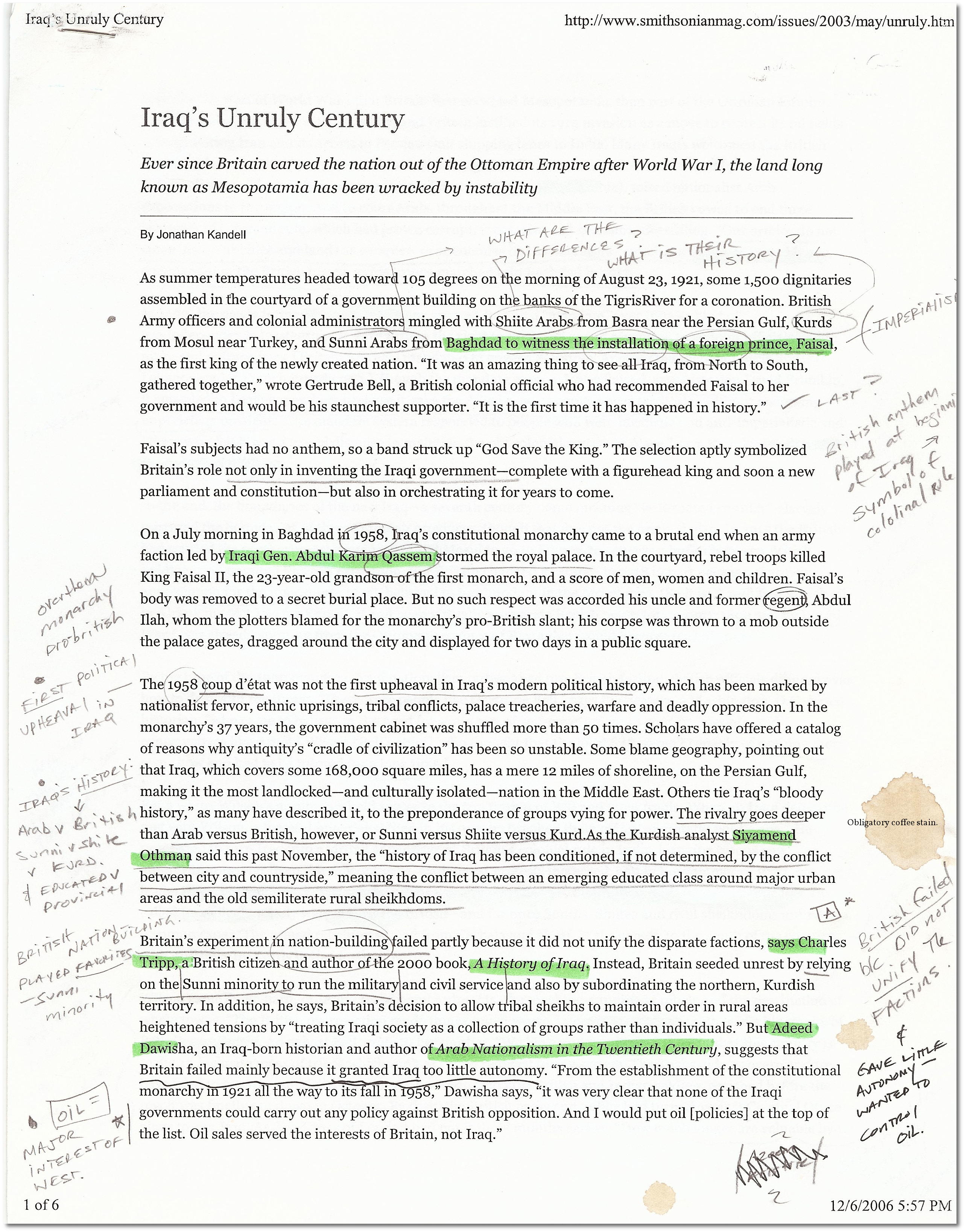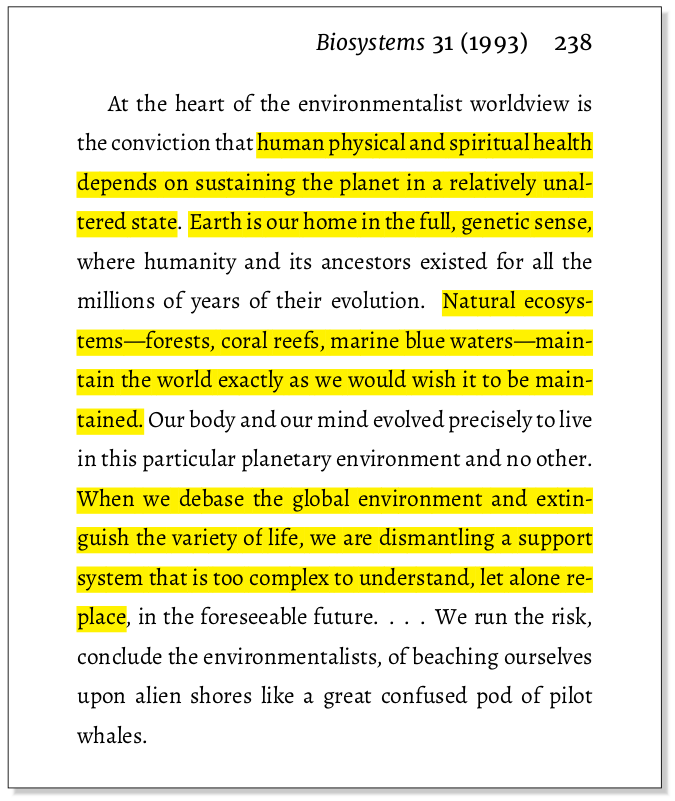Open Handbook
Chapter One: Annotation and Critical Reading
There is something predatory, cruel even, about a pen suspended over a text. Like a hawk over a field, it is on the lookout for something vulnerable. Then it is a pleasure to swoop and skewer the victim with the nib’s sharp point. The mere fact of holding the hand poised for action changes our attitude to the text. We are no longer passive consumers of a monologue but active participants in a dialogue.
— Tim Parks, “A Weapon for Readers”
If you life is like my life, the strategies you used to succeed in high school will not be sufficient for success in college. If we liken the experience of learning in high school to a drink from a water fountain, then college is like trying to drink from a firehose.
In college you will encounter a great deal of reading; most of these texts will be quite demanding and complicated. You will be asked to engage these texts critically and to challenge the thinking and conclusions that you find there. You will also have to retain an extraordinary amount of information and recall it later, or preserve it in some accessible way so that you may make use of it for study or your own writing. To thrive in this challenging environment you will need a number of things that I cannot teach you—things like curiosity, desire, patience, openness. However, there are two tools that I can help you with that will take you very far:
- A formal procedure for the annotation of texts.
- A rigorous approach to taking and preserving notes.
Annotating texts
Analysis involves breaking an argument down into smaller parts so that
you can understand how those parts work together to make the whole. The
best way to begin the process of analysis is to annotate texts as you read them by
using a system of symbols and marginal notes made on the document
itself. There is no right or wrong way to mark up a text, but you should
develop a system that you are comfortable with and try to stick with it.
Writing while you read will help you stay focused and read critically.
In fact, I would argue that if you are not writing while you read a text—by
putting it into your own words through annotation, summary, paraphrase, and quotation—then you are not reading critically at all.
Your objective in annotation is to flag the key elements of a piece of
writing—such as the thesis, claims, reasons, and key pieces of
evidence. You are identifying the main building blocks of the reasoning within the text. This kind of work serves two purposes. First, it helps you
maintain a critical focus as you read. Second, it helps you later if the
text must be used for study or your own writing.
During my annotations I always flag a number of things. I underline the
thesis once I find it and I place large dots next to claims that are being used to support the thesis. I always place keywords or a short statement next to each paragraph, aiming to create a “micro
summary” of the content. I use check marks or exclamation points next
to statements that I find important or noteworthy. Sometimes I draw
arrows or reference other page numbers to connect parts of an essay that seem related to me in some
way.
In addition to flagging and summarizing a text’s key ideas, claims, and
arguments, I also ask questions in the margins or note places where I
become confused. This is helpful later, on my second reading, since I
can pay more careful attention to the passages that gave me trouble. I
also write my thoughts as they occur to me and state objections to
things that seem problematic or wrongheaded. Sometimes I try to connect
an idea in one text with the idea(s) in another text I have read. Making
these sorts of connections is a central feature of the kind of thinking
and writing you will do in college.
As you can see from the example page below, the process of annotation keeps me engaged, active, and alert—key components in critical thinking.

The false allure of the highlighter
Students often associate critical thinking and a general studiousness with the use of a highlighter. However, I’d like to question this practice a bit. Compare the following selection from a student’s course reading to the annotation practices outlined above:

There are a number of problems worth noting here about the practice of highlighting while reading:
-
First, your objective when you read something should be to avoid having to read it again (unless, of course, you would enjoy doing so). Highlighting important portions of a text, as this student has done, only signals that the highlighted bits were important to the reader at the time of the reading. But to discover why they are important or what the highlighted portions mean, the student will be forced to read the text again. Busy students studying for multiple midterms do not have time to re-read entire books or articles.
-
Secondly, highlighting works against critical thinking by casting the reader in the passive role of information consumer. As Keith Hjortshoj argues, highlighting merely “emphasizes the authority of the text: what its author says, believes, or knows. The practice therefore leads you toward memorization and repetition, not toward interpretation, inquiry, or criticism” (41). While recalling information at a later time is important, this is not the sole purpose of reading. Critical reading also involves a process of evaluating, questioning, and interpreting the text—activities that highlighting actively resists.
-
Thirdly, highlighting doesn’t help you place the information into your long-term memory. Recent research suggests that taking notes by hand results in a significant boost to information retention.
-
Finally, highlighting doesn’t help you understand the structure of an argument—the main goal of any critical analysis. Arguments all have a certain structure: there is a main idea supported by a series of
claims,reasons,and pieces of supportingevidence.The highlighter fails to reveal this structure. Flagging key structural features of arguments (as described above in the process of annotation) will dramatically reduce the time it takes to study and will be of significant help in your writing as you make use of the texts in question.
Annotation strategies
Since you have likely never engaged a text in such a manner, here are some strategies that you might consider as you develop a process for annotation and critical reading:
-
Use a symbol system. Develop a system of symbols to flag important aspects of a reading. Mark significant elements within the text such as the
thesis,argumentativeclaims,andevidence.Also note when a text references other texts, authors, or events. Note places where you become confused or uncertain; later, in a second reading, you can give extra attention to these portions of the text. -
Interrogate the text. Be ruthless. Be rigorous. Ask questions back to the author in the margins of the text. Challenge the conclusions and arguments that he or she presents by making ones of your own.
-
Summarize. Write keywords or make “microsummaries” in the margins next to each paragraph. Later, you will not have to re-read the entire document. These can be especially useful for test preparation or if you later use the text in your own writing.
-
Connect. Find connections between the reading and others within the course or your broader reading experience. Develop the capacity to bring other texts into dialogue with each other, imagining writing and reading as a form of social interaction.